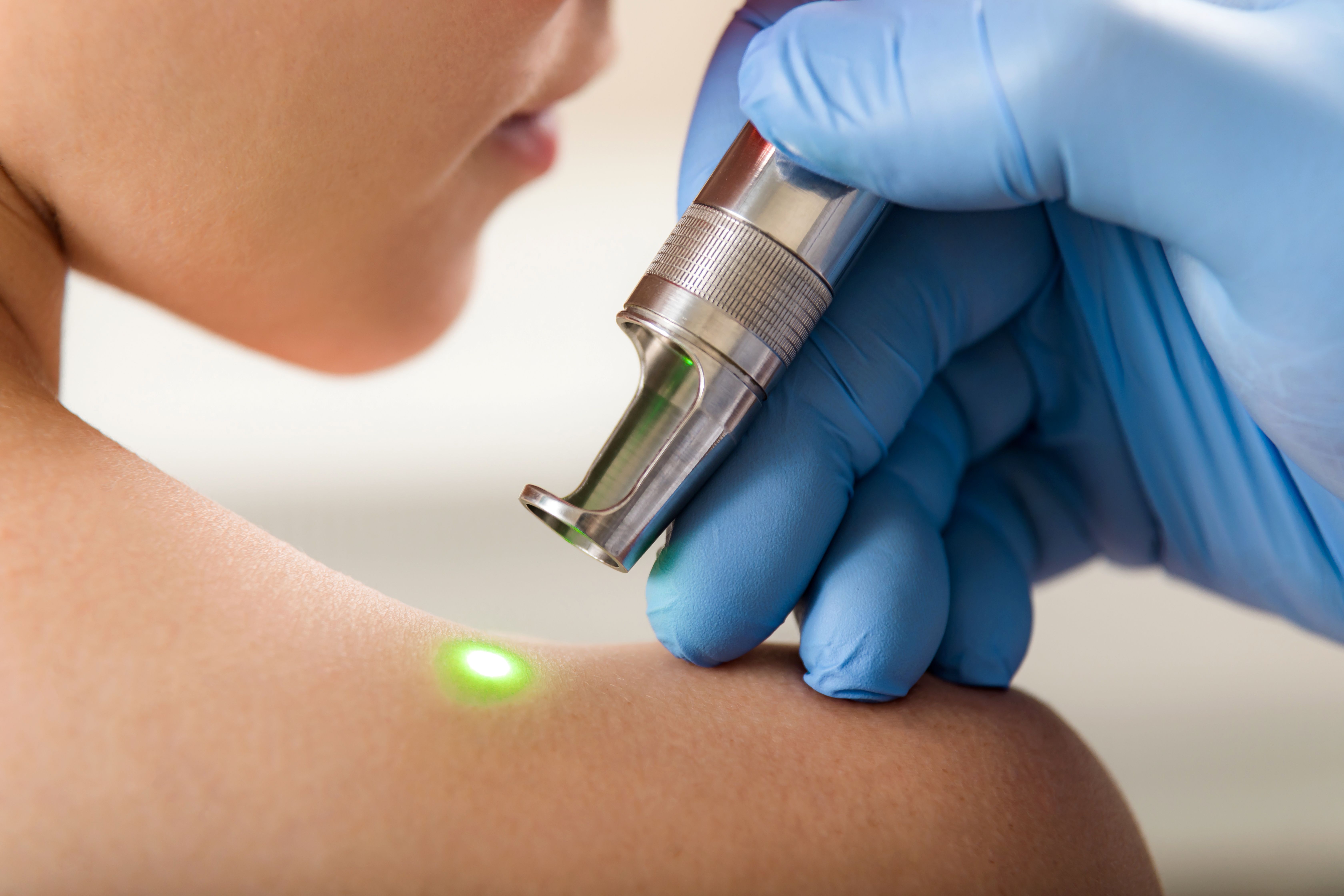- Acne
- Actinic Keratosis
- Aesthetics
- Alopecia
- Atopic Dermatitis
- Buy-and-Bill
- COVID-19
- Case-Based Roundtable
- Chronic Hand Eczema
- Drug Watch
- Eczema
- General Dermatology
- Hidradenitis Suppurativa
- Melasma
- NP and PA
- Pediatric Dermatology
- Pigmentary Disorders
- Practice Management
- Precision Medicine and Biologics
- Prurigo Nodularis
- Psoriasis
- Psoriatic Arthritis
- Rare Disease
- Rosacea
- Skin Cancer
- Vitiligo
- Wound Care
Article
Treating rosacea: Effective lasers don't have to put physicians in the red
Author(s):
Vascular lasers remain the gold standard for treating more severe cases of rosacea, including acne rosacea.

Key Points
New York - Laser technology has come a long way in helping to treat rosacea, but the best machines for more severe cases come at a hefty cost. Recent research suggests, however, that physicians treating the more common types of milder rosacea can expect to see similar results with their all-purpose, five-figure, intense pulsed light device as they might with the vascular device carrying a six-figure price tag and a host of bells and whistles.
To their credit, the newer, pricier vascular lasers are indeed valued as the gold standard of laser treatment for both severe and mild forms of rosacea, offering wavelengths of 585 nm and 595 nm to target superficial vessels and correspond with the 577 nm absorption peak of oxyhemoglobin.
And while the older, standard pulsed dye lasers tended to cause purpura lasting up to 10 to 14 days, the longer-pulsed duration machines used over the last few years usually do not.
Severe rosacea
For treating more severe types of rosacea and acne rosacea, Rhoda S. Narins, M.D., says she will first work to get the acne under control with therapies such as antibiotics or isotretinoin and intralesional injections of a corticosteroid.
Once the acne is controlled, she prefers the 595 nm Vbeam Perfecta laser (Candela) for the best results.
"That fact is, any type of lasers that treat blood vessels can be used, but I happen to prefer the Vbeam," says Dr. Narins, director, Dermatology Surgery and Laser Center and clinical professor of dermatology, New York University School of Medicine, New York.
"If a patient has very severe redness, I like to do one to three treatments, and those can usually address a good deal, if not all, of the redness," she says.
Pulsed dye lasers address erythema, flushing and telengiectasias, and once the latter are addressed, the rosacea will likely be on the road to recovery, Dr. Narins says.
"In most cases, once you get the telangiectasias under control, you will have the rest of the rosacea under control," she says.
Photodynamic light therapy in the treatment of rosacea, involving light therapy and the activation of aminolevulinic acid, has also gained a following for the treatment of papular rosacea; however, Dr. Narins says she is not yet convinced of the treatment's safety or efficacy.
"I'm always concerned about the long-term effect of using a chemical that is activated by light," she says.
"I don't personally think there are enough long-term studies on photodynamic light therapy for rosacea, and I'm not sure if it really adds anything to the treatment.
"We have used it in the office and found that while it increases the price of the treatment, I'm not sure it increases the result," Dr. Narins says.
The majority of rosacea cases that doctors will encounter, however, will be in the subtype category 1, or erythematotelangiectatic subtype, which affects nearly 15 percent of Caucasian women, compared to subtype 2, papulopustular rosacea, which affects only about 1.5 percent, according to the National Rosacea Society.
For treating those cases, a recent study indicates that physicians may be just as well-off with their standard intense pulsed-light device as with a PDL device.
The study involved 29 patients in a randomized, controlled, single-blind, split-face trial with nonpurpuragenic treatment with PDL and IPL and an untreated control.
Newsletter
Like what you’re reading? Subscribe to Dermatology Times for weekly updates on therapies, innovations, and real-world practice tips.













